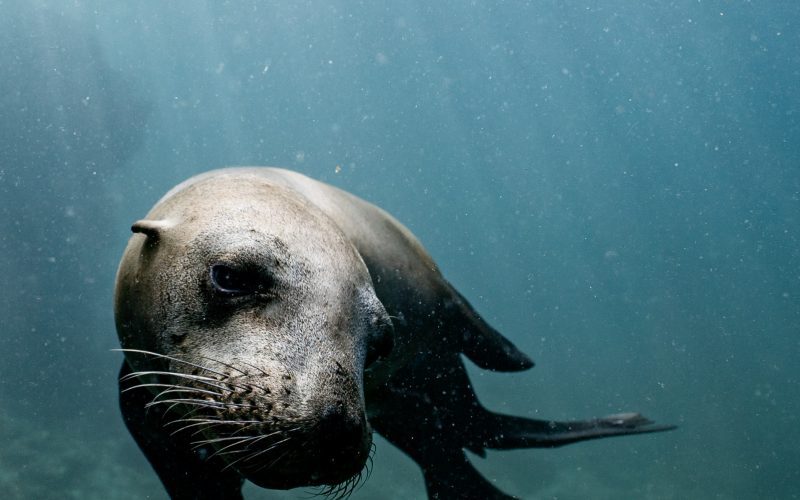Life in the deep ocean is a challenging feat, and only a few species have successfully adapted to this extreme environment. One of these remarkable creatures is the elephant seal, an incredible marine mammal capable of diving up to 1.5 kilometers deep for over two hours without taking a breath! How do they manage such incredible feats? In this blog post, we’ll explore the survival strategies that these magnificent animals have developed to thrive in their unique habitat. So grab your scuba gear and join us on this underwater adventure as we discover how elephant seals have adapted to life in the deep ocean!
What is an Elephant Seal?
Elephant seals are one of the largest pinnipeds in the world, with males weighing up to 4,500kg and measuring up to 6 meters long! These massive animals get their name from their large proboscis or trunk-like nose that resembles an elephant’s trunk. While both male and female elephant seals have these noses, it is much larger in males.
Despite their size, elephant seals are incredibly agile swimmers and can move through water with surprising speed and grace. Their bodies are streamlined for swimming, with powerful flippers that propel them through the water at speeds of up to 15 miles per hour!
Elephant seals spend most of their lives in the ocean but come ashore once a year during breeding season. During this time, they form large colonies on beaches along the California coast where they mate and give birth to pups.
One unique feature of elephant seal biology is that they undergo extended periods without eating while at sea – up to eight months for females and ten months for males! This adaptation allows them to range far from shore in search of food while conserving energy by reducing metabolic activity during times when prey is scarce.
How do Elephant Seals Adapt to Life in the Deep Ocean?
Elephant seals are known for their remarkable adaptability to the deep ocean environment. Their thick layer of blubber helps them stay warm in cold temperatures, while their large size and streamlined bodies enable them to swim and dive with ease.
One key adaptation that elephant seals have developed is the ability to hold their breath for extended periods of time. During a dive, they can slow down their heart rate and redirect blood flow from nonessential organs to their muscles, allowing them to conserve oxygen and stay submerged for up to two hours.
Another adaptation that has helped elephant seals thrive in the deep ocean is their amazing diving capabilities. They can reach depths of over 5,000 feet (1,500 meters) and remain underwater for up to two hours before returning to the surface for air.
In addition, elephant seals have also evolved a unique way of coping with changes in pressure during dives – by collapsing certain parts of their lungs so that air doesn’t get trapped inside. This allows them to avoid decompression sickness or “the bends,” which can be fatal if not treated promptly.
These adaptations make elephant seals one of the most successful marine mammals on earth – able to survive in some of the harshest conditions imaginable thanks to millions of years’ worth of evolution.
What are the Survival Strategies of Elephant Seals?
Elephant seals have developed a range of survival strategies to adapt to life in the deep ocean. One of their main adaptations is their ability to hold their breath for extended periods, allowing them to dive deeper and longer than most other marine mammals. Elephant seals can stay underwater for up to two hours and reach depths of over 1,500 meters!
Another strategy that elephant seals use is thermoregulation. Living in cold waters requires an efficient way to maintain body temperature, which they achieve through thick blubber layers and a high metabolic rate.
Elephant seals also have impressive size and strength, which allows them to fend off predators such as sharks or killer whales. They are known for their aggressive behavior towards perceived threats, using loud vocalizations or physical confrontations if necessary.
Furthermore, elephant seal populations have adapted social structures that help improve survival rates. These animals form large colonies during breeding season where males compete for females while females look after pups. This communal behavior provides protection from predators and increases chances of finding food.
These survival strategies allow elephant seals not only survive but thrive in harsh ocean environments where few other species can survive.
Conclusion
Elephant seals are fascinating creatures that have adapted to life in the deep ocean through various survival strategies. Their ability to store oxygen in their muscles and blood allows them to dive for long periods of time, while their thick blubber provides insulation against the cold temperatures of the water.
Their unique mating habits also play a role in their survival by ensuring genetic diversity within their population. Despite facing challenges such as climate change and human interference, these amazing animals continue to thrive in their natural habitat.
By studying how elephant seals adapt and survive in the harsh environment of the deep ocean, we can gain insights into how other marine animals may also be able to cope with changing conditions. Ultimately, it is our responsibility as humans to protect and preserve these incredible creatures so that future generations can appreciate them too.












